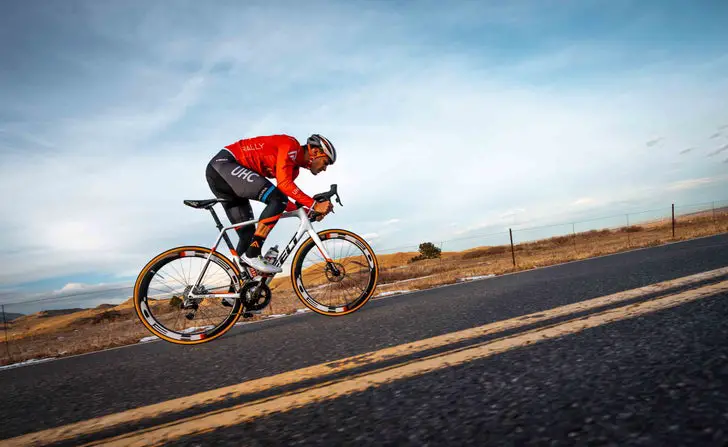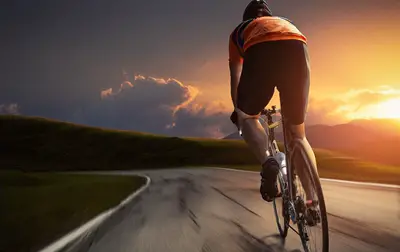
New into cycling? You are going to love it. As a complete sport, cycling engages all body parts and the thighs and calves. The first benefit of this exercise is the heart. On the one hand, it also strengthens the muscles by increasing the force of contraction and circulation. Experts report that cycling enhances vascularization, which limits the risk of infarction. Amplification of the respiratory capacities and a reduction in the recovery time are also observed in the long term. But how long should it take to bike a mile casually on average?
There is practically no way to tell. There are too many unknowns regarding the road conditions, what kind of bike you are thinking about, and how calm and old the rider is. It also depends on how fast you are going, your fitness, terrain, and your bike. I just got back from an 8.5km bike ride primarily flat but with some killer hills; it took me about 35 minutes. I did it on a mountain bike, and it was all road. So, in this case, I averaged about 6.5 minutes for one mile. Obviously, that time would have been faster on a road bike and flat ground.
How do you find your average speed when cycling?
Table of Contents
Why bother with the numbers, you might ask. As with most physical exercises, it is essential to measure and adapt your efforts. Do not bike too fast, nor for too long. It is preferable to opt for a flat ground during the first outing and not exceed an hour and a half of cycling. Therefore, the average number here could be your guide to perfect health and an enjoyable riding experience. If done at the correct speed, cycling can have many health benefits:
Increased breathing capacity and lower blood pressure are the main benefits of regular cycling. However, hypertensive people must get the green light from their doctor to start cycling. Some hypertensive people who persevere in the practice regain a normal tension at rest.
People prone to heavy legs, for their part, notice the regression of this phenomenon because pedaling increases venous return. Thus, the edemas subside, and the condition of the coronaries improves. There is also a decrease in the risk of arthritis to the extent that the arterial vascular system regains its efficiency.
Preventing back osteoporosis by cycling is also possible thanks to the development of bone capital, namely the increase of calcium in the bones.
Many metabolic diseases – cholesterol, diabetes, etc. – recorded a notable drop in their rates. The treatments and regimes must nevertheless be maintained.
Regular and enduring cycling – one hour a day – effectively combats fat and is overweight. By watching your diet, you can convert pounds of fat into muscle.
How many miles per hour on average should one bike?
If you want a concrete, straightforward, no-frills figure, that would be 10 miles per day for a beginner. That is around 60 minutes of workout. If you plan your route, this is generally what bicycle fitness enthusiasts do. However, this is not true for everyone, of course. You should be able to cycle many more miles as you improve in strength.
But then again, the number here depends on your fitness goals and what you are going to be faced with: mountains, tracks, gravel, or very rolling cycle paths. Also, do you go with your family, with children, loaded! The factors are so different for everyone! Training will also play a role. You can go on a bicycle trip without training because the body is a wonderful machine. However, you will have to adapt and assume that you will not reach the 10 miles/hr average right away.
How do you determine the miles you are going to cover in an hour?
We have already given many clues to track your performance concerning the average time to cycle a full mile. However, if you need to define your distances more precisely (to plan your route, for example), here are some tips, based on our own experience. All this is in order, we hope, to guide you in your cycling routines.
1. Bike weight
How much weight do you have on your bike? Are you riding with children behind you? Are you going ultra-light in the bike-packing version? If you love mountain bikes, single suspension models are lighter than full-suspension bikes.
Weight slows down your speed and the number of miles you will cover in your day. The front saddlebags catch the wind and slow down your speed. The trailer pulls you back.
2. Know your route and its elevation
During your biking session, the terrain will greatly influence the miles you will cover and the time to cover them. But that’s not all. Other factors must be considered, such as the quality of the roads or even the small differences in height. Indeed, we must be wary of “roller-coaster” stages.
Sometimes the slopes are really difficult and cut off the momentum. Other important aspects to consider include the terrain (rolling asphalt allows you to travel much more distance than a dirt road) or even the weather.
3. Anticipate the start
In my opinion, you have to know how to stay flexible and listen to your body. What matters is the journey, not the goal! If you are going on your first bike trip, your plans will probably be a bit difficult to follow. Unless you are very well trained, cyclers often tend to be a little ambitious because they forget to put the weight of our bike into perspective!
The best way to travel well by bike, in my opinion, is not to put unnecessary pressure on yourself. In all cases, we progress physically as we go. If, at first, the short ribs seem long and impossible, they will become easier and easier.
At the start of your adventure, set yourself a few quiet steps. Between 5 and 10 miles, for example, if you are not trained. There is no point in racing! Especially since it happens that knee pain occurs when you are not trained. Don’t worry, it’s okay (even if suddenly, it feels like you will have to give up)! It has happened to a lot of riders.
4. Stay flexible
The human body is amazing. It has its ups and downs and experiences day-to-day energy fluctuations depending on mood, form, and outside factors like weather conditions or terrain. Even by rigorously preparing your trip (which we never do), surprises can arise quickly.
For that, by getting to know yourself, you will know more or less visually if you will achieve the goal or not. But honestly, when traveling by bike, I find nothing better than leaving room for surprise. How many miles are we going to travel today? How long will that take? Sometimes I prefer not to answer these questions until we stop!
5. Plan fewer miles per hour, do more
I advise you to plan short days for your beginnings. Then if you have the desire, the energy, the motivation, nothing will prevent you from doing more. You can, in any case, increase your speed and distances as you travel. And, according to your philosophy, your desires, and your goals, you adapt.
If there’s one thing that doing 70 miles an hour has taught me, it’s that you never quite know what to expect on a bicycle trip unless you have prepared your trip exceptionally well. In particular, you are always told to plan 15 to 20% more miles, especially if you are going for a cycle route. Sometimes you won’t do them, but it will give you the extra motivation for the times you do!
And our average cycling time per mile in all of this?
For my cycling buddies and me, the average no. is of particular interest to travelers by bicycle and to the curious people we meet on the trails. We regularly tell ourselves that we should take the time to calculate it, then we forget. We are not really on the numbers! Some travel with the desire to constantly surpass themselves, looking for performance. And we follow it with great pleasure from afar on social networks, we admire the figures, but we don’t care a bit.
In fact, in some cases, cyclers put so much pressure on themselves that they can’t stand doing one mile in less than 3 minutes. An obligation that one should never impose on themselves.
For us, before the bikes, there is the journey. And that’s what matters to us. The bicycle is practical. It is a pleasant means of transport to take us through the landscapes. We have plenty of time to travel since we do not set deadlines. They are generally approximate. Our only constraints are climatic, and we often find it difficult when we have a defined number of miles vs. minutes to cover in a day. We want to see, discover, get lost, have a coffee, and get bewitched by nature’s beauty.
Take time to enjoy! Forget the comparison with others. Cycling is a personal introspection. You may not have the same weight on the bike, the same equipment, or the same dynamics as the others. And that’s good, to each his own!

